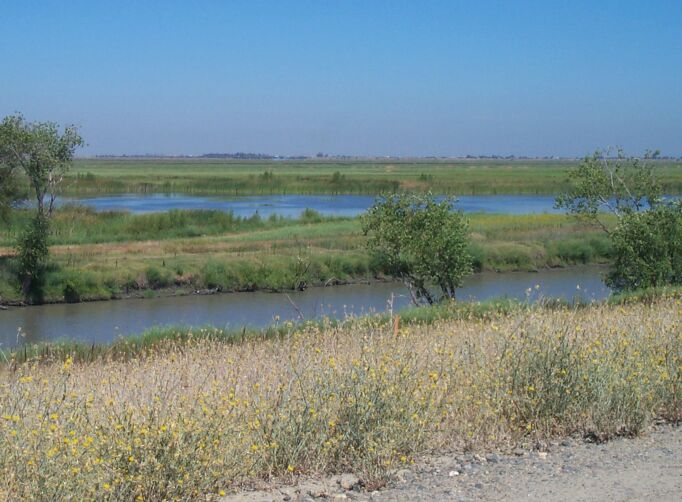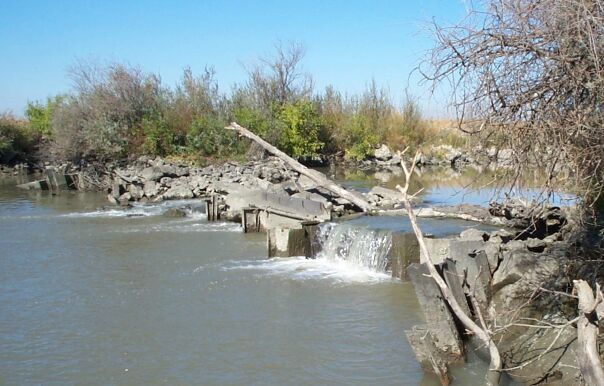
| glossary | menu | Normal | lg | hc | 9.) Fluvial Geomorphological Applications in River Forecasting > FGM and Flood Routing Parameters |
| < Previous | 1 | 2 | 3 | 4 | 5 | 6 | 7 | 8 | 9 | 10 | 11 | 12 | 13 | 14 | 15 | Next > |
FGM and Flood Routing Parameters

Yolo Bypass Wildlife area, shown in this upper image, is one beneficiary to operational forecasters properly calibrating flood routing models. Knowledge of a channel type and its morphologic properties has several benefits for understanding flood dynamics, from simply communicating in common terms between personnel to anticipating channel instability and the failure of predictive models. Approaching routing model calibration with an appreciation for, and understanding of, fluvial geomorphology should assist in better achieving operational goals.
Fluvial geomorphological principles, for example, inform the flood forecaster that the Lag and K terms should be a function of not only discharge, but also of entrenchment ratio, Sinuosity, width to depth ratio, and slope, to name a few channel controls. As Entrenchment Ratio increases, and flood waters spread more widely into the Floodplain, the storage increases, thereby increasing the attenuation of the flood wave delay. Likewise, as Sinuosity decreases and Channel Slope increases, the lag on the incoming hydrograph is reduced, and it more rapidly Reaches the downstream target.
Physical and mechanistic applications of basic fluvial geomorphology should be a basis for applying the lessons in this module to operational demands of channel management.

Image courtesy of NOAA
| < Previous | 1 | 2 | 3 | 4 | 5 | 6 | 7 | 8 | 9 | 10 | 11 | 12 | 13 | 14 | 15 | Next > |